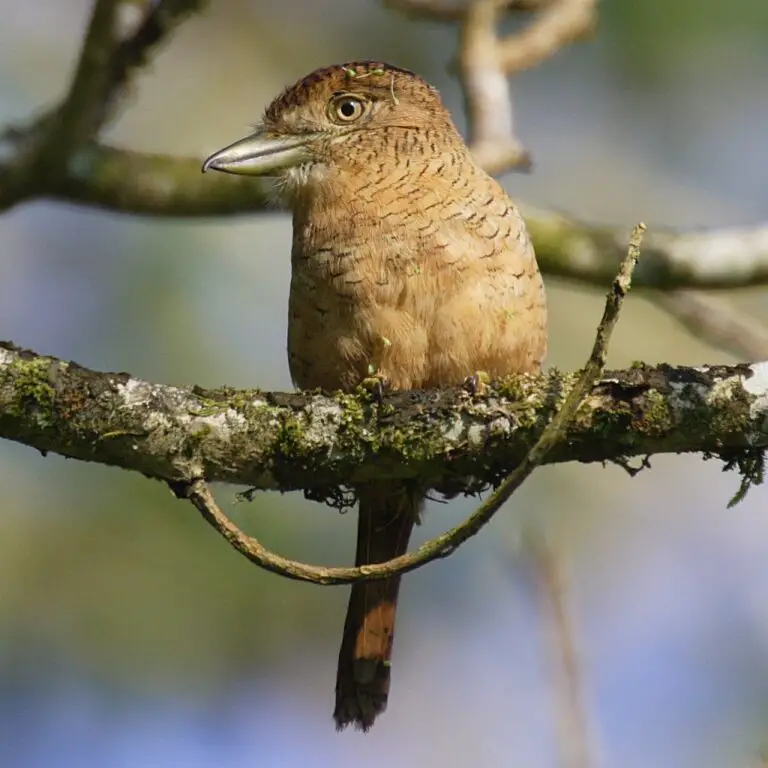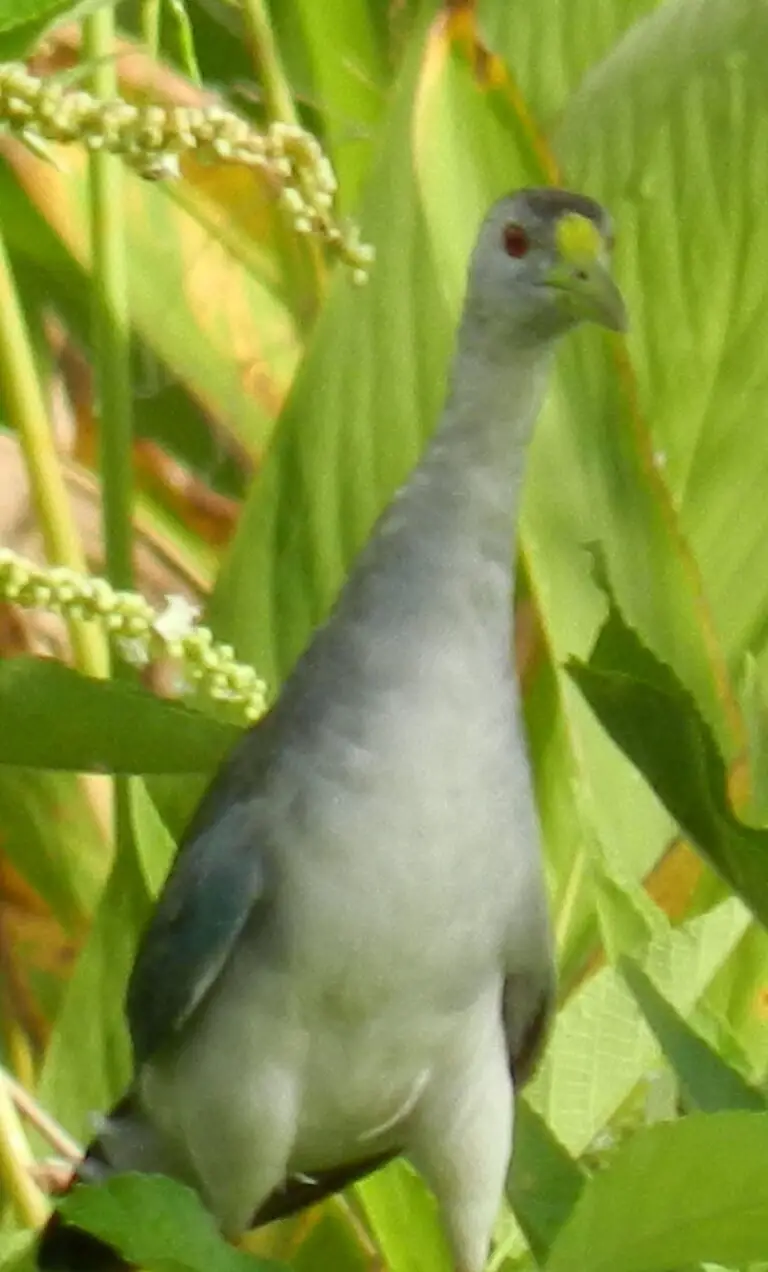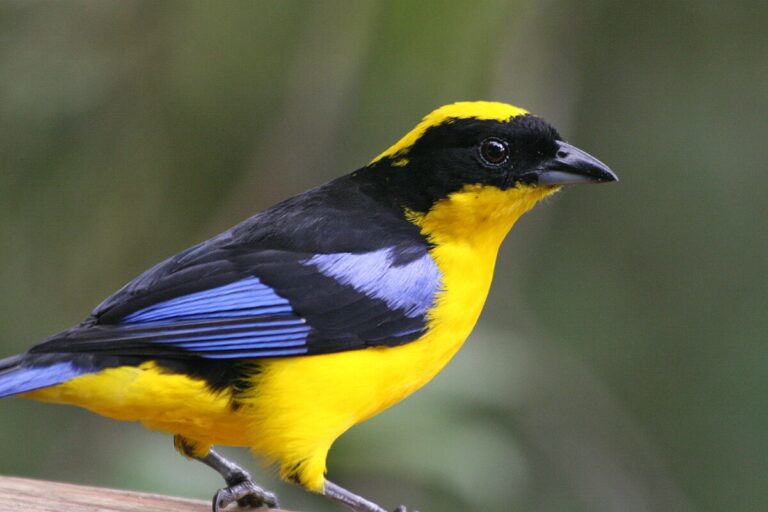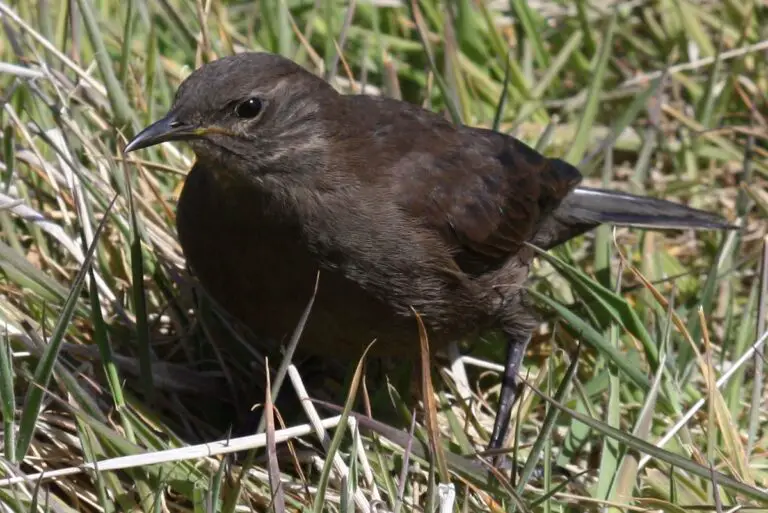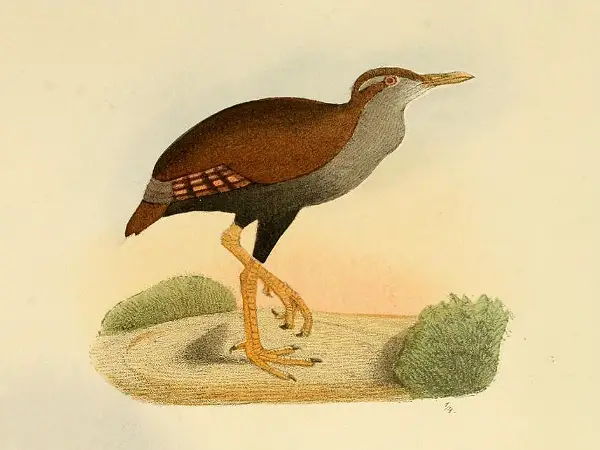Bald Eagle (haliaeetus leucocephalus)
Bald eagles are known for their incredible eyesight, which surpasses that of humans. It’s often said that they have 20/5 vision, meaning they can see at 20 feet what a human can see at 5 feet. This exceptional vision is a vital asset for them in hunting and navigating their surroundings.
Bald eagles, scientifically known as Haliaeetus leucocephalus, belong to the following classification:
- Kingdom: Animalia
- Phylum: Chordata
- Class: Aves
- Order: Accipitriformes
- Family: Accipitridae
- Genus: Haliaeetus
They are commonly found in North America and are classified as “Least Concern” in terms of conservation status, meaning their population is relatively stable and not currently facing significant threats to their survival.
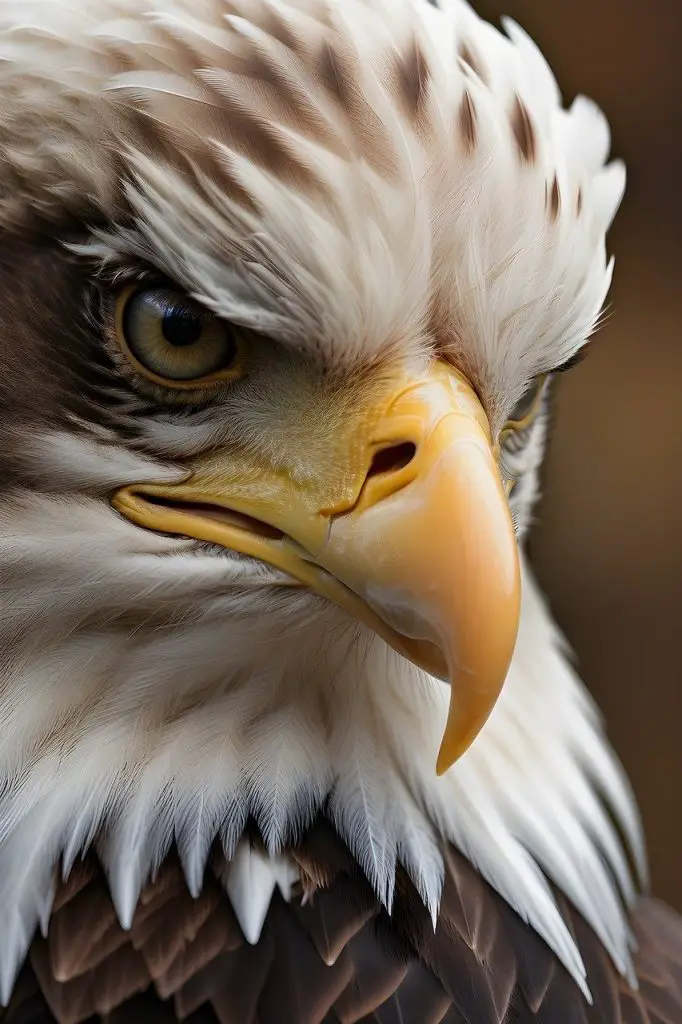
Bald Eagle Facts
- Common Name: Bald Eagle
- Scientific Name: Haliaeetus leucocephalus
- Number of Species: 1
- Type: Bird
- Location: North America
- Habitat: Near forests
- Nesting Location: Cliffs, trees, buildings, and ground
- Average Clutch Size: 2
- Incubation Period: 35 days
- Age of Molting: 8-14 weeks
- Prey: Fish, birds, and small mammals
- Diet: Carnivore
- Predators: Wolverines, bobcats, foxes, bears, raccoons, and birds
- Biggest Threat: Pesticide use
- Fun Fact: Bald eagles have 20/5 vision, much sharper than a human’s
- Most Distinctive Feature: The white plumage on the head
- Other Name(s): American eagle
- Color: Brown, yellow, white
- Height: 28-38 inches
- Weight: 6.6-14 pounds
- Wingspan: 70-90 inches
- Top Speed: 100 mph
- Lifespan: 15-20 years in the wild
These facts provide a comprehensive overview of bald eagles, covering their physical characteristics, behavior, habitat, diet, and more.
“Symbolizing strength and power, the bald eagle holds a special place in the hearts of many across North America. Its majestic flight captivates bird watchers and enthusiasts, embodying a sense of awe and admiration. Once teetering on the edge of extinction, the bald eagle now stands as a remarkable conservation success story. In this article, we’ll delve into intriguing details about the appearance, behavior, and life history of this iconic bird. Did you know, for instance, that some bald eagle nests can weigh as much as 2,000 pounds?”
3 Incredible Bald Eagle Facts!
- The bald eagle truly boasts remarkable vision, surpassing that of the average human by four to five times. Its superior color perception and ability to see ultraviolet light set it apart, along with an impressive 340-degree field of view that nearly wraps around behind its head. This keen eyesight compensates for its other less acute senses.
2. In a display of cunning, bald eagles sometimes conserve energy by pilfering the freshly caught prey of other birds. This behavior, observed by Benjamin Franklin, led him to famously remark that the bald eagle was a bird of “bad moral character.”
3. Since 1782, the bald eagle has held the prestigious title of the national bird of the United States, symbolizing freedom, strength, and resilience.
Evolution
The evolutionary journey of birds, including the majestic bald eagle, traces back to reptiles known as Theropods, which roamed the Earth between 144 million and 65 million years ago during the Mesozoic Era. Over time, feathers emerged from reptilian scales, and beaks gradually replaced teeth, as evidenced by fossil records indicating that early birds indeed possessed teeth.
Around tens of millions of years ago, a group of birds known as Kites emerged, pioneering the hunting and consumption of fish. From this lineage, the first eagles emerged approximately 36 million years ago, initially characterized as sea eagles. Like their Kite ancestors, they primarily targeted fish and exhibited featherless feet.
The bald eagle, an iconic symbol of strength and freedom, represents one of the outcomes of this evolutionary journey. The earliest fossil closely resembling the bald eagle dates back approximately one million years.
Bald eagles have evolved numerous adaptations to excel in their aquatic hunting pursuits. Their feet boast four powerful toes equipped with sharp talons and small projections called spicules, aiding in securing their prey. Serrations on the roof of their mouths assist in gripping slippery fish, while the black pigment in their wing feathers provides structural reinforcement, enabling swift dives into the water. With these specialized features, bald eagles are finely tuned for their role as skilled hunters of fish and waterfowl.
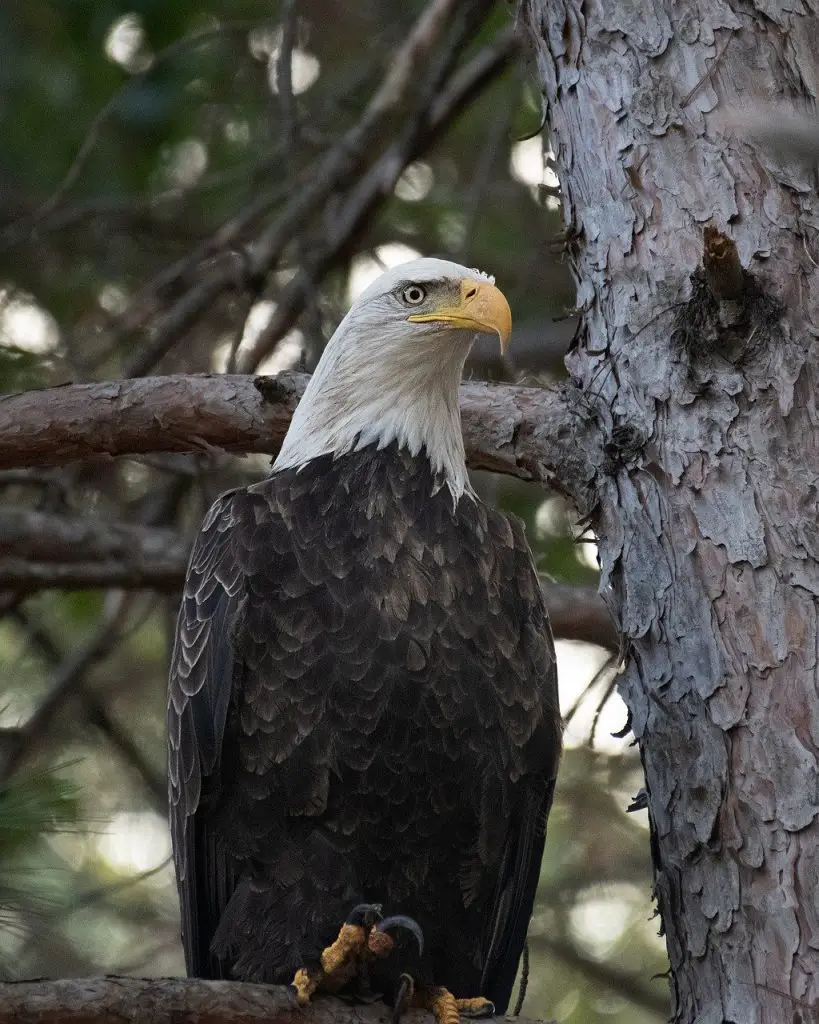
Species
The bald eagle, a prominent sea eagle, shares its lineage with the ancient Kite, forming part of a trio of species pairs, each featuring a white-headed and a tan-headed counterpart:
Bald Eagle and White-Tailed Eagle:
- Bald Eagle: This sizable bird of prey, revered as the national emblem of the United States, thrives in North America. Over millions of years, it has evolved into an adept fish hunter, boasting specialized adaptations. Subspecies include the Northern bald eagle (in Canada and Alaska) and the Southern bald eagle (in the lower 48 states).
- White-Tailed Eagle: Spanning across much of Eurasia, this formidable sea eagle boasts a wingspan that can reach up to 8 feet, making it the largest living sea eagle. It holds the honor of being Germany’s national bird.
Sanford’s Eagle and White-Bellied Sea Eagle:
- Sanford’s Eagle: Sporting dark plumage with a creamy-white head, distinguished by a dark eye-line and a formidable beak, this sizable sea eagle calls the Solomon Island archipelago home, favoring coastal waters.
- White-Bellied Sea Eagle: Frequently spotted along the coasts of Australia, this majestic eagle’s habitat ranges from New Guinea and Indonesia through Southeast Asia into China. Known for its resonant, goose-like calls, it displays a striking appearance with a white head, breast, underwing, and tail, complemented by gray upper feathers.
African Fish Eagle and Madagascar Fish Eagle:
- African Fish Eagle: Widely distributed across sub-Saharan Africa, wherever vast bodies of water are found, this impressive eagle, adorned with a white head, neck, and collar, serves as the national symbol of Malawi, Zambia, and Zimbabwe. Its distinct, resonant call echoes across African landscapes.
- Madagascar Fish Eagle: Endemic to the coastal regions of Northwest Madagascar, this critically endangered species represents the national bird of its native land. With its pale brown head, brown body, and whitetail, it showcases a preference for coastal waters over freshwater habitats.
These sea eagles, each with its unique characteristics and habitat preferences, contribute to the diverse tapestry of avian life across the globe, embodying both grace and power in their respective environments.
Where to Find the Bald Eagle
The bald eagle stands as the sole representative of the sea eagle genus to inhabit solely North America. While primarily found in this continent, sightings have extended as far south as Belize and Bermuda, and as northward as the Arctic region. Typically, these majestic birds favor mature forests adjacent to ample water sources, their preferred habitats for hunting and nesting.
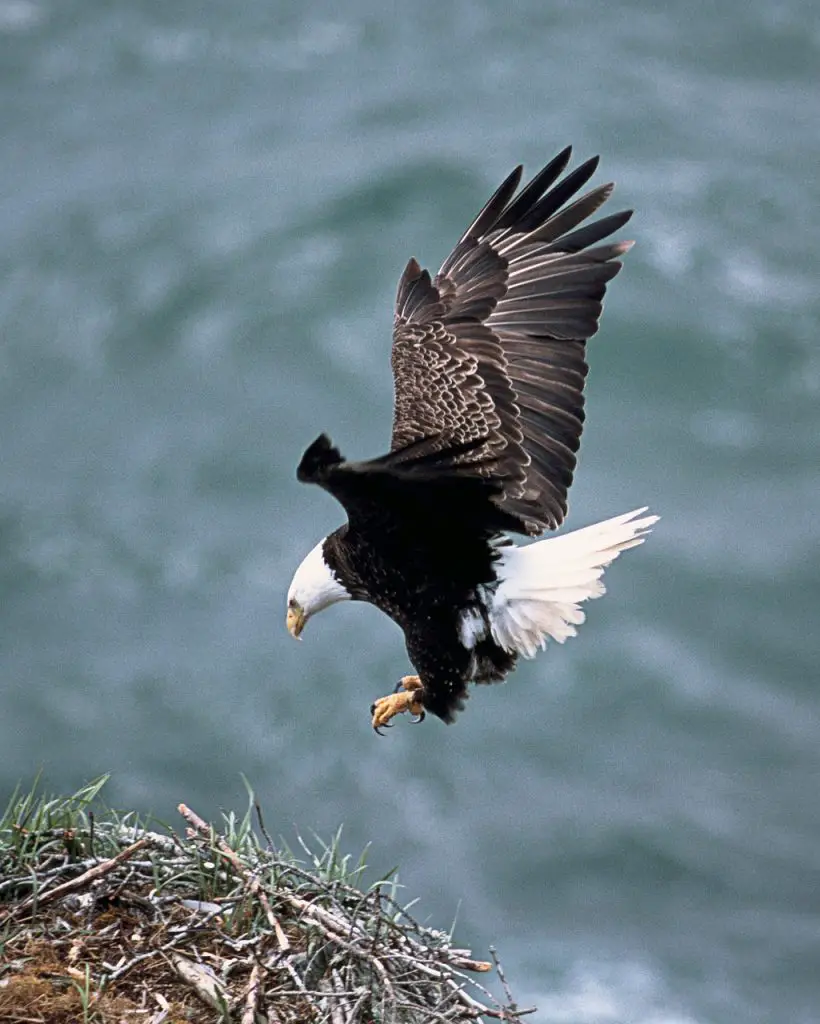
Nests
The bald eagle pair demonstrates a preference for constructing their nest amidst the canopy of tall trees. However, if such an environment is unavailable, they may opt for alternative locations such as a cliff face, artificial structures, or even the ground. Utilizing sticks intricately woven together and lined with lichen or moss, they meticulously fashion their nest. Remarkably, measuring between five to six feet in diameter, it stands as one of the largest nests among all American bird species.
Scientific Name
The bald eagle bears the scientific name Haliaeetus leucocephalus. “Haliaeetus” originates from the Greek word for sea eagle, reflecting its affinity for coastal habitats. Meanwhile, “leucocephalus” combines two Greek terms: “leukos,” signifying white, and “kephale,” meaning head. This aptly describes the distinctive white-feathered crown of the species. In terms of evolutionary lineage, the bald eagle shares close relations with other notable members of the sea eagle family, including the African fish eagle, white-tailed eagle, and Steller’s sea eagle.
Size, Appearance, and Behavior
Identifying the majestic bald eagle is a straightforward task. Standing between 28 to 38 inches tall from head to tail, it ranks among the largest avian species in North America. With its wingspan often exceeding seven feet when outstretched in flight, it commands the skies with grace and grandeur. While its body is predominantly cloaked in dark brown plumage, its distinguishing features include a head and tail adorned with striking white feathers. Equipped with robust yellow talons and sharp, predatory beaks, bald eagles are finely honed hunters specialized in capturing prey.
Distinguishing between male and female bald eagles can be challenging, as they share identical appearances apart from size differences. On average, females tend to be about 25% larger than males. This similarity complicates visual identification unless they are observed side by side.
In flight, bald eagles exhibit remarkable strength and agility, effortlessly gliding across vast distances on thermal currents and updrafts. Though typically solitary hunters and sleepers outside the breeding season, they form strong pair bonds when raising offspring. Communication among bald eagles involves a range of high-pitched chirps, whistles, and chattering sounds.
In times of nesting site scarcity, bald eagles may resort to aggressive territorial disputes, engaging in dangerous or even deadly conflicts to secure their territories. This tenacity and territoriality underscore their commitment to ensuring the survival of their offspring and maintaining their place in the ecosystem.
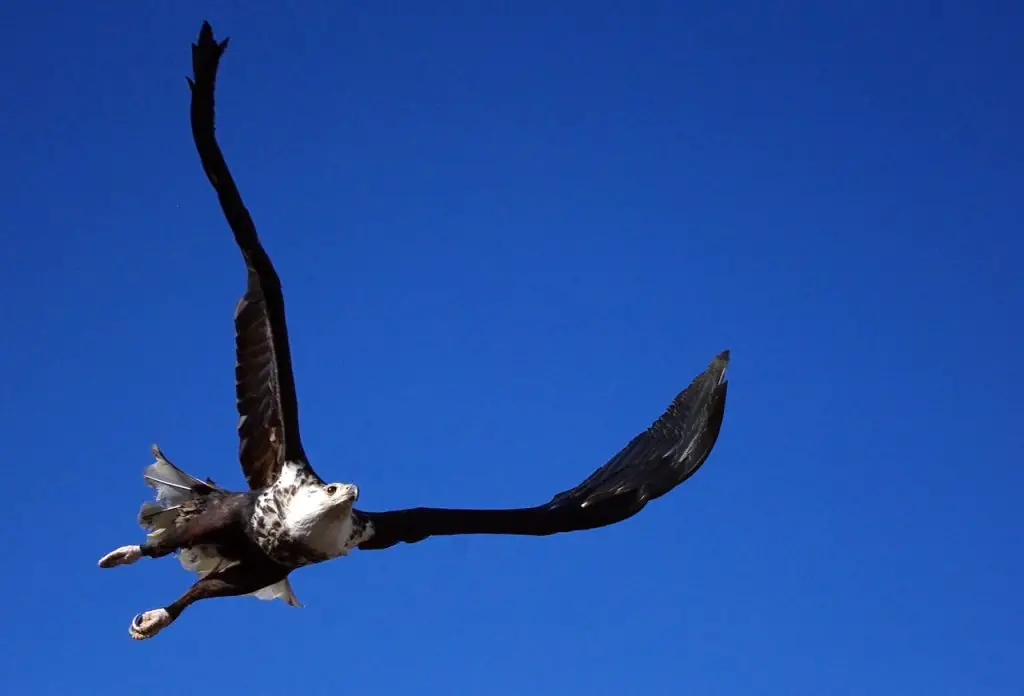
Migration Pattern and Timing
Northern populations of bald eagles, particularly those from Canada and the upper regions of the United States, exhibit a migratory behavior during the winter months. These eagles embark on journeys southward in search of more favorable foraging conditions and to escape the harsh cold of their northern habitats. The extent of their migration can vary significantly among individuals, with some traveling only short distances to find better foraging opportunities, while others undertake journeys spanning hundreds of miles. This migratory behavior highlights the adaptability and resourcefulness of bald eagles in responding to changing environmental conditions and ensuring their survival throughout the year.
Food Habit
The bald eagle, a carnivorous bird, sustains itself on a diet exclusively comprised of meat. Acting as an opportunistic predator, it targets various prey including fish, waterfowl, and small mammals. Employing its exceptional eyesight, the bald eagle perches high or soars overhead, scanning the ground or water below for potential meals. Upon spotting its quarry, it swiftly dives down, seizing the prey with its powerful talons.
Despite its formidable stature and hunting prowess, the bald eagle faces threats from human activities and environmental factors. Historically, hunting, trapping, accidents, and exposure to harmful chemicals posed significant risks to their population. Throughout the 20th century, the widespread use of pesticides, particularly DDT, nearly drove them to extinction by rendering adults infertile and weakening their eggshells. However, the ban on DDT in 1972 and dedicated conservation efforts have led to a remarkable recovery in the bald eagle population. Currently, it holds the status of a species of least concern on the IUCN Red List.
In the wild, adult bald eagles do not have natural predators. However, bald eagle chicks and eggs are vulnerable to predation by various animals including bobcats, wolverines, black bears, foxes, raccoons, owls, gulls, crows, and other large birds. Despite these challenges, concerted conservation measures continue to safeguard the majestic bald eagle and its habitat for future generations.
Reproduction, Young, and Molting
The bald eagle is renowned for its formation of lifelong monogamous pairs, enduring until the demise of one partner. To solidify their bond, these majestic birds engage in extravagant courtship displays, intertwining their feet while spiraling towards the ground and swooping at each other in mid-air. Once paired, the mates produce a single brood comprising one to three eggs annually, typically during the late winter to early spring reproductive season.
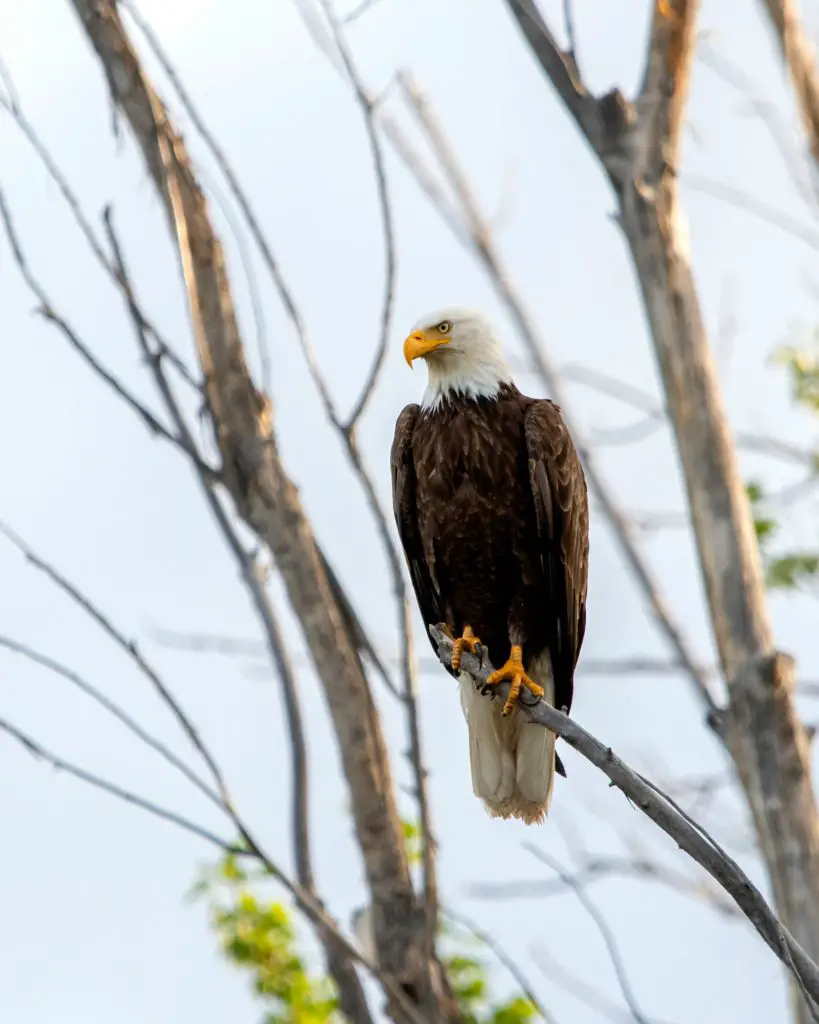
Both parents actively participate in nurturing the offspring, taking turns to incubate the eggs while the other hunts for sustenance. After an average of 35 days, the chicks hatch, displaying a brownish-gray head and tail patterned with white. Over the course of eight to 14 weeks, they undergo rapid development, spending their time engaging in playful activities, stretching their wings, and honing their hunting skills by grasping objects with their talons.
Despite being among the fastest-growing birds in North America, it takes approximately five years for juvenile bald eagles to attain full maturity and acquire their distinctive adult plumage. Their markedly different appearance from adults can pose challenges in identification. In the wild, bald eagles typically live for 15 to 20 years, although instances of captive individuals living up to 47 years have been recorded, highlighting their potential for longevity under optimal conditions.
Population
Once among the most persecuted and endangered birds in North America, the bald eagle faced a perilous decline, dwindling to just a few hundred breeding pairs by the mid-20th century. However, through concerted conservation efforts and legislative protections, the species has experienced a remarkable resurgence. Presently, their numbers have rebounded significantly, with an estimated 250,000 breeding pairs in existence. Notably, approximately 88% of these pairs are found within the United States alone. This remarkable recovery stands as a testament to the effectiveness of conservation measures and the enduring resilience of the bald eagle.
Before You Go…
In conclusion, the bald eagle’s journey from near-extinction to remarkable recovery serves as a poignant reminder of the power of conservation efforts and the resilience of nature. Once persecuted and endangered, these iconic birds have rebounded from a population low to thrive once again, with approximately 250,000 breeding pairs soaring across North America. Their resurgence stands as a testament to the importance of protecting and preserving our natural world for future generations to cherish and admire.
Frequently Asked Questions On Bald Eagle
Does the bald eagle migrate?
How many eggs does the bald eagle lay?
How fast does the bald eagle fly?
What is the bald eagle’s wingspan?
Where does a bald eagle live?
How big is a bald eagle?
How much does a bald eagle weigh?
How tall is a bald eagle?
What other birds look like bald eagles?
How Long Do Bald Eagles Live?
What are the key differences between a peregrine falcon and a bald eagle?
What are the differences between harpy eagle and bald eagle?
Reference:
